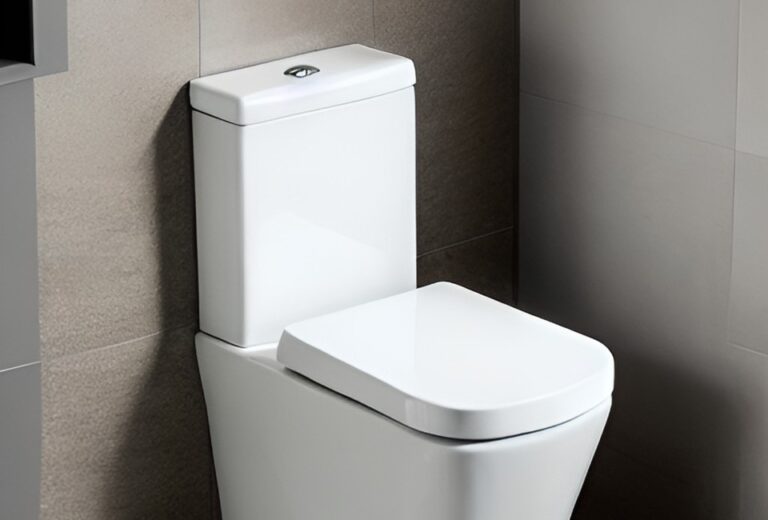It’s a situation that nobody wants to find themselves in: using a toilet at someone else’s home or party and experiencing a clog or overflow. The embarrassment and inconvenience that can result from such a mishap are undeniable. While low-flow toilets are designed to conserve water, they also come with their fair share of drawbacks. In this article, we will explore why low-flow toilets can clog too easily and overflow at the worst possible times, and how you can prevent it from happening to you.
The Problem with Low-Flow Toilets
Low-flow toilets, as the name suggests, are designed to use less water per flush compared to traditional toilets. This eco-friendly approach to water conservation has become increasingly popular in recent years. However, the reduced water usage can sometimes create issues that can lead to clogging and overflowing. Here are a few reasons why low-flow toilets can be prone to such problems:
1. Limited water flow
Low-flow toilets tend to have a smaller flush valve and trapway, which restricts the flow of water. This limited water flow may not be sufficient to effectively push waste through the pipes, increasing the likelihood of clogs.
2. Inefficient flush mechanisms
Some low-flow toilets utilize a dual-flush system, offering different options for liquid and solid waste. However, these mechanisms can be less reliable and prone to clogging if not used correctly or maintained properly.
3. Flushing habits
Users of low-flow toilets may change their flushing habits, leading to inadequate flushing. People may be tempted to flush fewer times or use less toilet paper, unaware that these alterations can result in clogging.
4. Aging sewer systems
In older homes or buildings, the plumbing infrastructure may not be designed to handle the reduced water flow of low-flow toilets. This can contribute to increased clogging and potential overflows.
Preventing Clogs and Overflows
While it may seem inevitable that using a low-flow toilet will lead to embarrassing situations, there are steps you can take to mitigate the risk. Here are some practical tips to prevent clogs and overflows:
1. Be mindful of what you flush
Avoid flushing large amounts of toilet paper or other non-biodegradable items down the toilet. Opt for small, manageable amounts to reduce the risk of clogging.
2. Flush properly
Use the right flushing technique, ensuring that you hold the flush lever down long enough for a complete flush. This will help to clear the toilet bowl effectively.
3. Regular maintenance
Conduct routine maintenance on your low-flow toilet to prevent potential issues. This includes using toilet-friendly cleaners, avoiding harsh chemicals, and periodically checking the flush mechanisms for any signs of damage or wear.
4. Educate guess
If you are hosting parties or guest events, consider providing a discreet sign or reminder in the bathroom about proper flushing etiquette. This can help prevent unnecessary clogs and overflows caused by unfamiliar users.
5. Consider upgrades
If you are frequently experiencing clogs and overflows, it may be worth considering upgrading to a more efficient and reliable low-flow toilet model. Newer designs often address the common issues associated with older models, providing a better flushing experience.
FAQs about Low-Flow Toilets
1. Can low-flow toilets clog less if I use less toilet paper?
– While using less toilet paper can decrease the chances of clogging, it is not a foolproof solution. Flushing small amounts of toilet paper at a time is generally recommended to reduce the risk.
2. Can I use a plunger to unclog a low-flow toilet?
– Yes, a plunger can be used to unclog a low-flow toilet. However, exercise caution to prevent damage to the toilet and its components.
3. How often should I conduct maintenance on a low-flow toilet?
– Regular maintenance is crucial for preventing clogs and overflows. It is recommended to conduct maintenance at least twice a year, including checking flush mechanisms and cleaning the toilet.
4. Are there any specific cleaners I should use for low-flow toilets?
– It is advisable to use toilet-friendly cleaners that are labeled as safe for low-flow toilets. Avoid using harsh chemicals or abrasive cleaners, as they can damage the toilet components.
5. Can upgrading to a newer low-flow toilet model solve the clogging issue?
– Upgrading to a newer low-flow toilet model with improved design and flushing mechanisms can certainly reduce the chances of clogging. However, proper usage and maintenance are still essential for preventing overflows.
While low-flow toilets have their advantages in terms of water conservation, they can also present challenges when it comes to clogging and overflows. By understanding the limitations of these toilets and implementing preventive measures, such as flushing properly and conducting regular maintenance, you can minimize the risk of encountering embarrassing situations. Additionally, educating guests on proper flushing etiquette and considering upgrades to newer models can further enhance your experience with low-flow toilets. Remember, knowledge and proactive measures are key to preventing inconvenient toilet mishaps.
